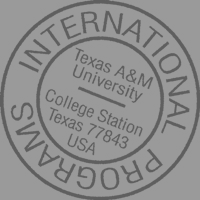Super heroes continue to capture the imagination of American youth. Why not focus attention on the heroes among us who use knowledge as a tool to change the world instead of some fantasyland set of super powers?
Texas A&M agricultural researcher Sam Goff cited Dr. Norman Borlaug as a real hero who used agricultural expertise to increase grain yield to feed people in areas of the world where many were starving.
Listen to the podcast to hear Sam Goff discuss current issues in agricultural research in Sub-Saharan Africa.
Dr. Norman Borlaug, Texas A&M University Distinguished Professor of International Agriculture is credited with saving more lives than any other person who has ever lived through his breakthrough agricultural research often referred to at the Green Revolution. Now I call that a super incredible feat!
Dr. Borlaug’s research lead to the development of new varieties of rice, wheat and maize that allowed for increased levels of production in the tropics and saved many people from starvation in Asia, India and Africa. In December 2006, Dr. Borlaug received the Congressional Gold Medal of Honor, our nation’s highest civilian honor. He was also honored with the Nobel Prize in Agriculture in 1970.
Use these links to learn about Dr. Borlaug and his research.
